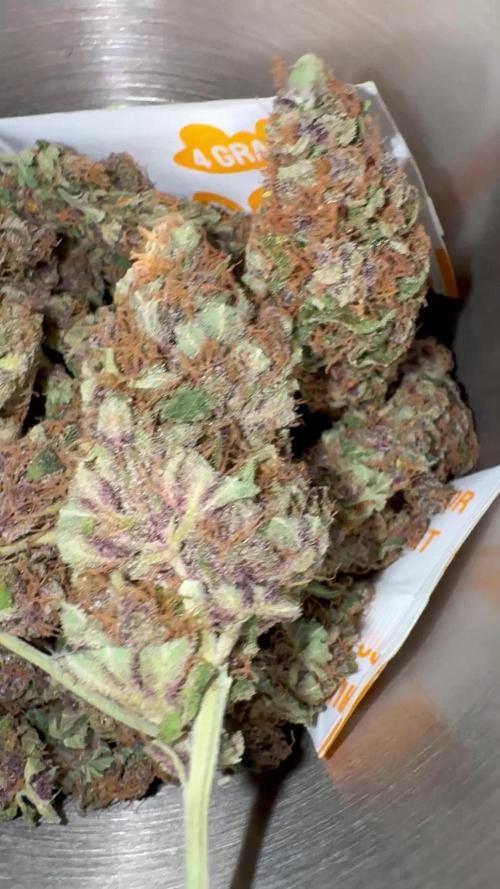The Grow Awards 2026 🏆 





























Processing
Likes
3
Share


@GardnerXXI
Follow
Hi guys. Little diary here, just so i can save some pics of this grow. Today is day 45. Planning on start flushing at the end of the week . Sorry for the lack of images, but just want Bud porn this time . Cheers
Processing
Likes
5
Share


@Mr_nugs_lover_David
Follow
The 2 seeds have germinated within 58 hours, immediately planted them. Let's grow another beutiful strain from Gea!
Likes
17
Share


@TerrazasBrew
Follow
2 plants showing different results. One has been flowering for 1 week and the other one looks stagnating. The one flowering is 38cms tall and new growth on top looks yellow and leaves on the bottom are stained. The other one has bigger stains at the bottom. Don't know the deficiency. Watering with 1ml Byron Bay Gold stage 2 per litre of RODI water. Am I missing calmag? Water ph?
Likes
27
Share


@MiyaguiOkPolilla
Follow
Sigue en pie esperando a explotar. Algunos esquejes ya estan a su lado en macetas y equiparan su altura. Veremos como entra en etapa de floración con la poda que he realizado y todo el LST. Esta chica bebe mucho y se mantiene siempre con un color muy hermoso, sus ramas son mas que resistentes por lo que veremos como aguanta.
Saludos a todos y agradezco consejos como siempre!
Irie!
Likes
14
Share


@Dunk_Junk
Follow
Wow... She's really entered flowering this week!
I've had to bend over her main cola so is could receive light as opposed to growing above it 😂 😕
Also she's been stretching like crazy. I have backbuilt quite a few bud sites. We will see in the coming weeks how effective this has been.
Likes
8
Share


@HomeGrown_Medicinal
Follow
First week! What a joy!
This Banana Purple Punch is off to a great start, popping out of the soil with no shell on.
Spending 36hrs in water, 36hrs in a paper towel, then 48hrs under the soil before popping her head up into the light.
The light schedule I'm following is 20/4 under two 100w LEDs running around 80% at 650mm above the babies. They're receiving 150-200umol's at roughly 11-14 DLI.
Organic medium and nutes so just watering in around 200mL of dechlorinated water at 6.6 pH per day. I figured I want to get this medium nice and moist for the microbes to thrive so I've been bottom watering 200mL extra every other day, with a gap day today as the pots are nice and weighty now.
I'm running my ventilation on an hour on,
hour off schedule during Veg to take the pressure off my heaters and humidifier. (power bill) We're heading into winter and my grow is in an insulated lung room in my garage, so the fresh air can get down past 0 celcius and 30% humidity although the heaters keep the environment at 23-25 degrees celcius.
A few trials I'm working through, but the environment is pretty steady and I'm a happy gardener so far.
Welcome baby BPP 🍌
Processing
Likes
5
Share


@MRSituation
Follow
01-12-2020
,19:30 kor el szórtam a magokat
06-12-2020 Elültettem a palántákat,,az Afgan kush még nincs kint
08-12-2020 Afgan kush előbújt, növekszik
Likes
5
Share


@BigLamar
Follow
Week 1 now complete since we flipped the switch.
Pistols are are creeping out slowly but surely.
Decent.
See what happens….
Likes
6
Share


@valiotoro
Follow
Easy trim✂️
Harvest in 2 times first the top buds then the lower!
No popcorn 🍿
The smell is delicious cookie & lemon 🍋 🍪
The buds are extremely dense 🤩
See you in 2025 for the smoke report
Take care 💜
Baxter loves you🕺🏽
Processing
Likes
41
Share


@Silverback_Guerilla
Follow
1/18 - 1/24:
Getting fatter by the day. They got two feedings this week with cha ching, and I'll start flushing them when then are dry next.
Processing
Likes
8
Share


@GrownwithLED
Follow
The plants stopped growing in height and are now in FULL FLOWERING mode. Every day more and more flower clusters appear and start to build colas at the sidebranches now. The trichome production is also in full swing, the plants get stickier every day and smell DELICIOUS. The Barbarian (=AK-47 x Barbara Bud) plants have a sweet sandelwood-smell like the AK-47 but also with peach undertones from the Barbara Bud in it. I LOVE THE AROMA!
Likes
25
Share


@XperencdGmanXG
Follow
Major issues with calcium def for no reason and a weird re veg, and the utter lack of mould resistance. Plant was tall and buds are huge and dense, let's hope the taste is phenomenal.
Likes
20
Share


@PureMedicin
Follow
Cal mag deffeciency. No problem I knew I would run Into it using soil nutes. Some rapid growth on most sherberts. Pink kush Is more stubborn and difficult but one of them seem to be thriving. Not sure why most pink kushs are just a bit slower. The seeds also seemed to NOT be germinating as fast as all the other strains.
This is some really solid genetics so far with some rapid growth to them.
Scrog installed 20 - 23 cm above the highest point of the pots. I will just them grow into the scrog and then train them into the trellis. I might raise the lights so they can stretch just a bit.
Call mag issue was fixed very fast changing to Coco nutrients and i have some really healthy growth now at the end of week 4
Likes
20
Share


@Automaniac
Follow
Welcome to week 6 / week 3 of flowering!
She stretched like crazy the past 10 days, but it has slowed down now as we enter week #6. Everything has gone very smoothly so far. I will probably do some defoliation this week because it’s getting crowded in the middle.
✅Day 36: No water.
✅Day 37: No water.
✅Day 38: 96oz of water. Defoliated bottom and center.
✅Day 39: No water.
✅Day 40: 96oz of water.
✅Day 41: No water.
✅Day 42: 96oz of water.
Likes
49
Share


@Wastent91
Follow
Ehi ragazzi come va? Tutto bene spero, la ragazza sta esplodendo di vigore!! Nonostante il poco spazio si sta facendo spazio tra le F1 e sta creando le sue cime come fosse la regina della grow! FastBuds mi stupisce ogni volta! Le loro genetiche sono spettacolari, ma il merito è anche della creazione del terriccio ideale della bio tabs che la sta facendo crescere come un baobab ahahah ! Si vedono le prime cime e le foglie si sono sviluppate davvero grandi e piene di vigore si vede che la ragazza sta bene e vuole dare il meglio di sé nella sua breve vita , spero esca una ganja davvero speciale da questa Tropicana cookies ,un sacco di cime resinose e piene di thc! Ringrazio Mars hydro perché il merito della crescita spettacolare di queste ragazze e della sua luce ,che a me sembra perfetta per intensità e distribuzione.. grazie a tutti voi che mi seguite ! Per questa settimana penso sia tutto alla prossima! buon 420 a tutti! 🐱😼💪🧙♂️🌱🌿🌲💗
























